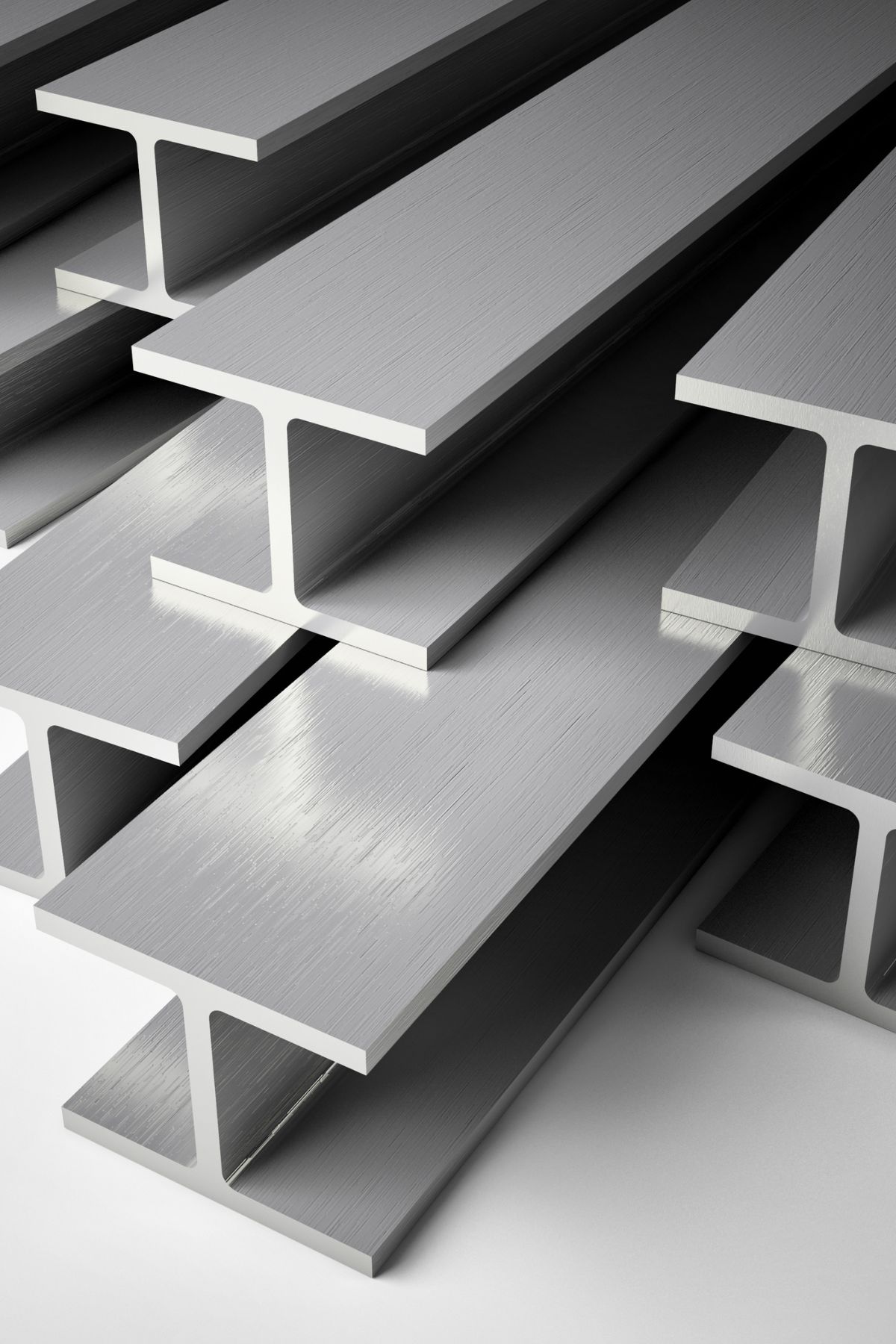A Steel Beam Span Calculator is an essential tool for architects, structural engineers, builders, and advanced DIYers who need to design safe and efficient support structures.
1. Beam Properties
Section Properties
2. Loading Conditions
3. Support Conditions
4. Deflection Limit
5. Building Code
6. Results
Whether you're constructing a home, designing a commercial floor, or reinforcing a garage beam, determining the correct span for a steel beam is one of the most critical decisions in any structural project. The Steel Beam Span Calculator simplifies this process by helping users estimate the maximum allowable span or verify if a selected beam can carry the expected loads without failing due to bending, shear, or excessive deflection.
Steel beams come in many shapes and sizes, and their performance is influenced by numerous factors—including the beam’s cross-sectional properties, the type and magnitude of loads applied, and how the beam is supported at its ends. Without a calculator, estimating these values manually requires access to engineering tables, design codes like AISC or Eurocode, and the ability to compute complex equations. The Steel Beam Span Calculator brings these tools together in a simple, user-friendly interface that can be used directly from a web browser, making it a powerful aid in early-stage design or field assessments.
For professionals and non-engineers alike, this calculator bridges the gap between theory and application. It allows users to experiment with different span lengths, load combinations, and beam sizes, offering instant feedback on whether the configuration will meet safety and code compliance standards. By including real-time checks on bending moment, shear force, and allowable deflection limits, the Steel Beam Span Calculator offers not only convenience but peace of mind.
In this article, we’ll explore how the Steel Beam Span Calculator works, what engineering principles it uses, and how you can apply it to real-world design situations. You’ll also learn how to interpret the results, what to do if your beam doesn’t pass the checks, and when it’s time to consult a structural engineer for a final review.
What Factors Affect Steel Beam Span Calculations?
A Steel Beam Span Calculator considers several engineering and architectural factors to determine whether a specific beam can safely support the loads it will encounter. These factors aren’t arbitrary—they are rooted in structural mechanics, safety codes, and decades of empirical research. Understanding what goes into a span calculation is crucial not just for accuracy but for ensuring that the resulting structure is both functional and code-compliant.
A. Beam Properties
The first and most fundamental input in any Steel Beam Span Calculator is the beam itself. Steel beams come in various shapes—such as W-beams (wide flange), S-beams (standard I-beams), and C-channels—each with distinct cross-sectional properties. These properties determine how well the beam resists bending and shear under loading.
Key beam characteristics include:
- Depth (d) – the vertical height of the cross-section
- Area (A) – the total cross-sectional area
- Moment of Inertia (I) – a measure of resistance to bending
- Section Modulus (S) – derived from I and used to calculate bending strength
The calculator uses these values, often preloaded from steel section tables like the AISC W-shape database, or allows custom inputs if the user is working with a non-standard size or international section.
B. Loading Conditions
No beam exists without a load. The Steel Beam Span Calculator takes into account two main categories of load:
- Dead Loads – permanent, fixed weights such as the beam’s own self-weight, flooring systems, or ceilings
- Live Loads – temporary or movable weights like people, furniture, equipment, or snow
Depending on the structure, the load can be a uniformly distributed load (UDL) or a point load applied at a specific location. Advanced calculators like the one we’ve built also let you input both dead and live loads separately, ensuring that the final strength and deflection checks follow appropriate load combination rules, such as:
1.2 × Dead Load + 1.6 × Live Load (per AISC LRFD)
C. Support Conditions
The way a beam is supported greatly affects its internal stresses. The Steel Beam Span Calculator lets users choose from common support types:
- Simply Supported – the beam is pinned at both ends and free to rotate
- Cantilever – fixed at one end and projecting outward
- Fixed at Both Ends – restrained against rotation at both ends
Each support type changes the calculation formulas for bending moment and deflection. For example, a uniformly distributed load on a simply supported beam produces a maximum bending moment of wL² / 8, while the same load on a cantilever would result in wL² / 2.
D. Deflection Limits
Even if a beam is strong enough, it can fail due to excessive sagging. That’s where deflection limits come in. Building codes specify how much a beam can deflect before it becomes a serviceability problem (e.g., cracked drywall or sagging floors). Common thresholds include:
- L/360 for floors (e.g., 1" max deflection for a 30 ft span)
- L/240 for roofs
The Steel Beam Span Calculator computes the expected deflection and compares it to the allowable limit based on the span and user-selected deflection criteria.
E. Building Code Compliance
To ensure designs are legal and safe, the calculator adheres to structural codes such as:
- AISC LRFD or ASD – U.S.-based design standards
- CSA S16 – Canadian steel design code
- Eurocode 3 – European standard
These codes define how loads should be combined and how resistance factors or allowable stresses should be applied. For example, AISC’s LRFD uses resistance factors (ϕ), while ASD uses safety factors on allowable stresses.
F. Strength Checks
After all inputs are set, the Steel Beam Span Calculator performs several safety checks:
- Bending Check: Is the beam’s moment capacity (ϕMn) greater than the factored moment (Mu)?
- Shear Check: Does the beam resist the maximum shear force (Vu)?
- Deflection Check: Does the actual deflection stay within allowed limits?
Optional advanced calculators may also include:
- Lateral-Torsional Buckling (LTB) – lateral twist of unbraced beams under bending
- Local Buckling – instability of thin flanges or webs
Only when all these checks pass can the beam be considered adequately designed for its span and loading.

How to Use the Steel Beam Span Calculator
The Steel Beam Span Calculator is designed to simplify structural design for anyone from engineers to informed homeowners. With a guided interface and clearly labeled inputs, users can quickly assess whether a specific steel beam is adequate for a given span and load configuration.
Here’s a step-by-step walkthrough to help you use the calculator effectively:
Step 1: Select or Enter Beam Properties
Begin by selecting your beam type (e.g., W-beam, S-beam, or custom). Then choose a predefined beam size such as W10x12, or manually input your own section properties:
- Depth (d) in inches
- Area (A) in in²
- Moment of Inertia (I) in in⁴
- Section Modulus (S) in in³
You’ll also need to specify the material grade, such as A36 (36 ksi yield strength) or A992 (50 ksi). If you’re using a non-standard steel type, a custom field is available to enter the yield strength directly.
The Steel Beam Span Calculator will use these values to determine the beam's capacity to resist bending and shear.
Step 2: Define the Load Conditions
Next, specify how the beam will be loaded:
- Uniform Load (UDL): Enter the dead and live load in pounds per linear foot (plf).
- Point Load: Enter a single load in pounds and its location along the beam span.
If you're working under building code standards like AISC LRFD, the calculator will automatically combine loads using factors (e.g., 1.2DL + 1.6LL) to ensure compliance with safety guidelines.
This step ensures that the total load on the beam is correctly calculated before structural checks are performed.
Step 3: Select Support Conditions
Choose how your beam will be supported:
- Simply Supported (most common): Beam rests freely at both ends.
- Cantilevered: One end of the beam is fixed and extends outward.
- Fixed at Both Ends: Beam ends are restrained from rotating, offering additional strength but requiring precise analysis.
Then, input the span length in feet. The Steel Beam Span Calculator uses this span in all further calculations, including bending moment, shear force, and deflection.
Step 4: Set Deflection Limits
Structural integrity isn’t just about strength—it’s also about stiffness. Enter your desired deflection limit:
- L/360 for floors (recommended)
- L/240 for roofs
- Or use a custom L/x value if you have a more stringent requirement
The calculator will compare actual deflection against the allowable value to determine if the beam will sag excessively under load.
Step 5: Choose a Design Code
Select the applicable building code:
- AISC LRFD (U.S.)
- AISC ASD (U.S.)
- CSA S16 (Canada)
- Eurocode 3 (Europe)
Your choice will influence how the calculator applies load factors and safety margins, aligning the output with local construction standards.
Step 6: Click “Validate & Calculate”
Once all fields are filled, click the “Validate & Calculate” button. The Steel Beam Span Calculator will perform internal calculations to:
- Estimate the factored moment (Mu) and compare it to the beam’s bending capacity (φMn)
- Calculate shear force (Vu) and ensure it is within limits
- Determine actual deflection and compare it with the allowable deflection based on span length
Each result is displayed with a clear PASS ✅ or FAIL ❌ indicator.

Interpreting the Results
Once you've run your configuration through the Steel Beam Span Calculator, you’ll receive detailed output showing whether your beam selection meets the strength and serviceability criteria. Understanding these results is crucial for determining if your beam is safe to use—or if you need to adjust the design before moving forward.
A. Bending Check (Moment Capacity)
The most critical structural check is for bending, which determines if the beam can resist the internal stresses caused by applied loads.
- Factored Moment (Mu): This is the maximum moment the beam will experience under the combined load (e.g., Mu = wL² / 8 for a UDL on a simply supported beam).
- Design Moment Capacity (φMn): Calculated using the beam’s section modulus (S) and yield strength (Fy):
φMn = φ × Fy × S
- Where φ is the resistance factor (typically 0.9 under AISC LRFD).
If Mu < φMn, the result is ✅ PASS. If not, it’s ❌ FAIL, and the beam may need to be replaced with a larger section or the span/load must be reduced.
B. Shear Force Check
Shear checks ensure that the beam doesn’t fail due to horizontal sliding forces, particularly near the supports.
- Factored Shear (Vu): For a UDL on a simple span,
Vu = wL / 2
Shear Capacity (φVn): Simplified as
φVn = φ × 0.6 × Fy × Aweb
where Aweb = d × twebA_{web} = d × t_{web}Aweb = d×tweb (depth × web thickness)
While shear failures are less common in wide flange beams, this check is essential, especially in short spans with heavy loads.
C. Deflection Check
Even if a beam passes strength checks, it must also stay within allowable deflection limits to prevent functional or aesthetic issues such as sagging floors or cracked drywall.
- Actual Deflection (Δ): For a simply supported beam with UDL:
Δ = 5wL4 / 384EI
- Allowable Deflection: Typically L/360 for floors, or a custom L/x value
If actual deflection is greater than the allowable limit, the result is ❌ FAIL, and you may need a stiffer beam (higher I), shorter span, or lighter load.
D. What If the Beam Fails a Check?
The calculator will clearly mark each result as ✅ PASS or ❌ FAIL. If any check fails:
- Try a larger beam size with higher S and I values
- Reduce the span by adding intermediate supports
- Lower the applied loads, especially live loads
- Use a higher grade of steel (e.g., upgrade from A36 to A992)
- Consult a structural engineer for advanced scenarios or reinforcement solutions
E. Safety and Engineering Margins
Keep in mind that the calculator uses design-level loads with built-in safety margins, based on the selected code (e.g., AISC LRFD). This means a beam that "just passes" is still considered structurally adequate.
However, in high-risk or mission-critical projects (e.g., hospitals, seismic zones), stricter safety factors or peer-reviewed engineering may still be required.
Limitations and Disclaimers
While the Steel Beam Span Calculator is a powerful tool for preliminary design and educational purposes, it is not a substitute for a detailed structural analysis or licensed engineering review. Users should be aware of its limitations and understand when professional judgment is necessary.

A. Not a Substitute for Engineering Certification
The calculator simplifies several assumptions that a professional engineer would consider in a full structural analysis. These include:
- Lateral bracing conditions
- Connection design
- Load path continuity
- Dynamic or seismic effects
- Fatigue and vibration considerations
- Fire resistance ratings and thermal effects
If your project involves public safety, legal liability, or building permit submission, the results from the Steel Beam Span Calculator should always be verified and approved by a licensed structural engineer.
B. Simplified Loading and Support Models
This calculator assumes ideal loading scenarios such as:
- Uniformly distributed loads
- Single point loads
- Idealized support conditions (perfectly pinned, fixed, or cantilevered)
In reality, beams are often subjected to complex combinations of loads, including variable or dynamic forces, torsion, and uneven load distribution. These cases require finite element analysis or detailed hand calculations beyond the scope of this tool.
C. Approximate Section Properties
When users select beam sizes from predefined dropdowns (e.g., W10x12), the calculator uses approximate section properties (like I and S) from standard steel tables. However, actual performance may vary based on manufacturing tolerances, corrosion, or notching during construction. Always consult a verified structural steel handbook or manufacturer’s datasheet if precision is required.
D. Limitations of Deflection Calculations
The Steel Beam Span Calculator applies classic elastic theory for deflection:
Δ =5wL4/ 384EI
This formula assumes:
- Homogeneous, isotropic material behavior
- Elastic deformation (no yielding)
- No lateral-torsional buckling
For long-span or unbraced beams, deflection may be amplified by instability effects. If your span exceeds the recommended unbraced limits or if deflection appears borderline, consult a qualified engineer.
Try the Steel Beam Span Calculator
Now that you understand how it works and what factors influence its results, it’s time to try the Steel Beam Span Calculator for yourself. Whether you’re designing a new structure, retrofitting an existing beam, or just exploring what different beam types can support, this tool gives you the insight you need—instantly and intuitively.
🔧 Features You Can Use Right Now
- Interactive Beam Selection: Choose from standard W-shapes like W10x12 or enter your own custom section properties.
- Dual Load Input: Input dead and live loads separately for accurate code-based calculations.
- Support Configuration: Select from simply supported, cantilevered, or fixed-end beams to match your real-world scenario.
- Code Compliance Options: Apply standards like AISC LRFD, AISC ASD, CSA S16, or Eurocode 3.
- Instant Results: With a single click, view:
- Maximum moment and bending strength comparison
- Shear force evaluation
- Deflection vs. allowable limits
- Visual PASS/FAIL Feedback: Know immediately if your design meets structural safety and serviceability requirements.
✅ What You Can Use It For
- Preliminary structural layouts
- Estimating the feasibility of steel beam spans
- Comparing beam sizes before consulting an engineer
- Classroom demonstrations and engineering education
- Field checks for common framing conditions
🚧 Reminder Before You Build
While the Steel Beam Span Calculator is highly informative, it is still a preliminary design tool. It’s best used to:
- Screen for undersized or clearly overdesigned beams
- Explore material and span tradeoffs
- Estimate performance before final engineering review
If your beam configuration fails one or more checks, don’t panic. You can:
- Select a larger beam
- Reduce the span or spacing
- Lower the applied loads
- Upgrade the steel grade
You can then re-run the calculator to compare options side by side.
👉 Try It Now
Use the Steel Beam Span Calculator below to test your span and load. It’s fast, free, and built with real engineering principles.
Conclusion
The Steel Beam Span Calculator is more than just a convenient online tool—it’s a practical bridge between structural theory and real-world application. Whether you're designing a residential floor, evaluating a commercial roof beam, or exploring material choices during the early planning stages of a project, this calculator empowers you to make informed, code-compliant decisions in minutes.
By integrating key factors such as beam size and type, material grade, support conditions, load types, and deflection limits, the Steel Beam Span Calculator ensures a balanced assessment of both safety and serviceability. It not only tells you if your design will hold up under stress—it also helps you understand why. This makes it an invaluable resource for engineers in training, experienced contractors, and even detail-oriented homeowners.
However, as with any tool, the calculator’s outputs are only as good as the inputs. Always verify dimensions, units, and assumptions, and remember that this tool is meant to guide—not replace—professional engineering judgment. For critical structures, permit applications, or buildings subject to seismic or extreme wind loads, a licensed structural engineer should always validate the final design.
In a world where precision and safety are non-negotiable, the Steel Beam Span Calculator offers a user-friendly, research-backed platform to streamline your design process. Try it today, test different configurations, and make better building decisions with confidence.
